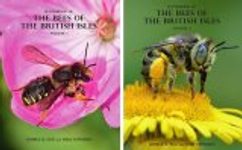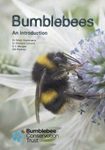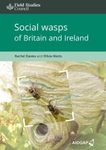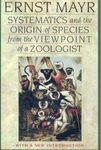By: Karl von Frisch(Author), Leigh Chadwick(Translated by), Thomas D Seeley(Foreword By)
566 pages, 187 b/w photos, 267 b/w illustrations, 45 tables
![The Dance Language and Orientation of Bees The Dance Language and Orientation of Bees]()
Click to have a closer look
About this book
Contents
Customer reviews
Related titles
About this book
Until his death in 1982, Karl von Frisch was the world's most renowned authority on bees. The Dance Language and Orientation of Bees, originally published in 1967 and now made available again by Harvard University Press as a print-on-demand volume, is his masterwork – the culmination of more than fifty years of research. It describes in non-technical language what he discovered in a lifetime of study about honeybees – their methods of orientation, their sensory faculties, and their remarkable ability to communicate with one another.
Thomas Seeley's foreword traces the revolutionary effects of von Frisch's work, not just for the study of bees, but for all subsequent research in animal behavior. This edition also includes an "Appreciation" of von Frisch by the distinguished biologist Martin Lindauer, who was Frisch's protégé and later his colleague and friend.
Contents
Foreword to the Paperback Edition, by Thomas D. Seeley
An Appreciation of Karl von Frisch, by Martin Lindauer
Preface to the First Edition
One: The Dance of Bees
I. History
II. Methods in General
1. The observation hive
2. Heatable observation hives
3. Rooms for bees
4. Marking the bees with numbers
5. We set up an artificial feeding place
6. Automatic recording of visits to the observation place
7. Cleaning the equipment: scents as sources of error
8. How bees are put to work or brought home
9. Measurement of the tempo and direction of dancing
10. Selection of the bees
III. The Round Dance as a Means of Communication when Nectar Sources Are Nearby
A. The objective is known to the bees informed
1. The scouts
2. The round dance
3. Contact without dancing can also be effective with other members of the same group
4. Diffuse information given when bees are fed at sugar-water dishes
5. Distinct information given when bees feed at flowers
6. Odors as a means of communication
7. The pollen collectors
8. The dance floor
9. Grouping according to odor
Summary
B. The objective is not known to the bees informed
10. Recruitment of additional helpers
11. New forces are aroused only when needed
12. How do the recruits find their objective?
13. The odor of the food sources as a guide to the newcomers
14. Experiments with flowers
15. The adhesiveness of odors to the bee’s body
16. Absence of communication about colors and shapes
17. The role of the scent organ
Summary
IV. The Tail-Wagging Dance as a Means of Communication when Food Sources Are Distant
1. Description of the tail-wagging dance
2. The transition from the round dance to the tail-wagging dance
3. Comparison of nectar and pollen collectors
Summary
A. The indication of distance
4. The tempo of the dance
5. The influence of internal factors on the dance tempo
6. The influence of external factors on the tempo of dancing
a. Temperature
b. The wind
c. Gradient of the flight path
d. Pharmaceutical agents
7. How accurately can newcomers follow the distance indications? Stepwise experiments (Studenversuche)
8. What part of the tail-wagging dance is the signal that defines the distance?
a. The components of the tail-wagging dance and their correlation with distance
b. Experiments to vary components of the dance independently
c. Comparison of the precision of searching and the accuracy of distance indication
9. How does the dancer gauge the distance?
a. Bees do not signal the absolute distance to the goal
b. The indication of distance is not based on the duration of the flight
c. The expenditure of energy as a measure of the distance
10. The significance of the outward and the homeward flight in the indication of distance
11. The shape of the curve for distance
Summary
B. The indication of direction
12. First hints of the mode of indicating the direction of the goal
13. The indication of direction on a horizontal surface
14. The indication of direction on the surface of a vertical comb
15. Dances on an oblique comb surface
16. Individual differences in the indication of direction, and the influence of age
17. Comparison of the effects of round dances and tail-wagging dances
18. How precisely is the indication of direction followed by the newcomers? Experiments in a fan-shaped pattern
19. Dances when the sun is in the zenith
20. No indication of direction upward or downward
21. The significance of the outbound and homebound flights for the indication of direction
22. Detour experiments
a. First observations and preliminary experiments
b. Experiments on the Schafberg
c. Experiments with Italian and Indian bees
d. The biological aspect
e. Detour experiments with bees on foot
23. The indication of direction in a crosswind
24. “Misdirection”
a. Light-dependent “misdirection”
b. “Misdirection” due to the force of gravity (“residual misdirection”)
25. The role of the scent organ and floral odors with distant sources of food
26. We look for a feeding station from directions supplied by the bees
Summary
V. Dependence of the Dances on the Profitability of Foraging Activity
1. Factors determining the release and liveliness of the dances
a. The sweetness of the sugar solution
b. The purity of the sweet taste
c. Ease of obtaining the solution
d. Viscosity
e. Load
f. Nearness of the food source
g. Floral fragrance
h. Form of the food container
i. Uniform flow from the source of food
j. General status of nourishment in the colony
k. Improvement of the food
l. Time of day
m. Weather
2. Regulation of supply and demand on the flower market
3. The clocks of bees and of flowers
Summary
VI. Guidance by Scent
1. Historical aspects
2. Methods
3. Results
4. Verification—but no useful application
Summary
VII. Application of the Dances to Other Objectives
1. Water
2. Bee glue (propolis)
3. Dwellings
Summary
VIII. Other Dance Forms
1. Jostling run, spasmodic dance, and sickle dance
2. The buzzing run
3. Grooming dance (shaking dance)
4. Jerking dance (D-VAV)
5. Trembling dance
Summary
IX. Danceless Communication by Means of Sounds and Scents
1. Sounds
2. Odors
Summary
X. Variants of the “Language of the Bees”
1. Racial differences (“dialects”)
2. Differences among species: the Indian bees
3. From primitive to successful messenger service with the stingless bees (Meliponini)
4. A brief glance at other social insects
Summary
XI. Phylogeny and Symbolism of the “Language of the Bees”
Summary
Two: The Orientation of Bees on the Way to the Goal
XII. Orientation on Long-Distance Flights
A. Landmarks
B. The sun as a compass
1. Displacement experiments
2. Competition between the celestial compass and landmarks
3. The contribution of the time sense to orientation, and knowledge of the sun’s course
4. Perception of the sun through a cloud cover
Summary
C. Orientation by polarized light
5. The polarized light of the sky
6. Demonstration of orientation by polarized light
7. The connection between the polarization pattern and the position of the sun. Experiments in the shadow of a mountain
8. The use of artificial polarization patterns when the sky is cloud covered
9. The relative significance of the sun and polarization of the sky
10. What color range is effective in the perception of polarization?
11. What degree of polarization is needed for orientation?
12. On the function of the bees’ ocelli
13. Spontaneous orientation relative to the plane of vibration of polarized light
14. Is perception of polarization direct or indirect?
a. Partial climination of the eyes
b. Alteration of the reflected pattern
c. Indirect and direct orientation in other animals
15. The analyzer for polarized light
a. Is the analyzer in the dioptric system?
b. The radical analyzer in the insects’ ommatidia
16. Structure of the visual rods and perception of polarized light in other groups of animals
Summary
D. A glance at other animals
17. Orientation to the plane of vibration of polarized light
18. The celestial compass
a. Arthropods
b. Vertebrates
19. Orientation to a magnetic field
Summary
XIII. Orientation when Near the Goal
A. The orientation flights
B. Optical orientation nearby
1. The bees’ color sense
2. Form vision
3. Vision in bees and the appearance of flowers
C. Orientation nearby by means of the sense of smell and taste
4. Olfactory discrimination in bees
5. The location of the sense of smell
6. The capacity to localize by smelling
7. The bees’ olfactory acuity
8. The biological significance of floral odor
9. The sense of taste
Summary
Retrospect
References
Index
Customer Reviews
By: Karl von Frisch(Author), Leigh Chadwick(Translated by), Thomas D Seeley(Foreword By)
566 pages, 187 b/w photos, 267 b/w illustrations, 45 tables
"Von Frisch's The Dance Language and Orientation of Bees will surely take its place in the tiny group of genuine classics of scientific literature. It is the definitive account of the waggle dance and other forms of honeybee communication as they have been so consummately elucidated by von Frisch and his students, and it contains in addition a clear summary of the vast lore of experiments on the sensory physiology and orientation of the honeybee."
– Edward O. Wilson, Science
"This significant and lucid volume is the dichtes Buch of Karl von Frisch. Here in full flower are his classic experiments with honeybees which revolutionized our thinking about the communication behavior of animals."
– Donald R. Griffin, American Scientist
"Von Frisch's clear and inspiring prose sets a standard for scientific writing which has never been bettered. You will never view the insect kingdom in the same way again."
– Tim Smit, The Week


































